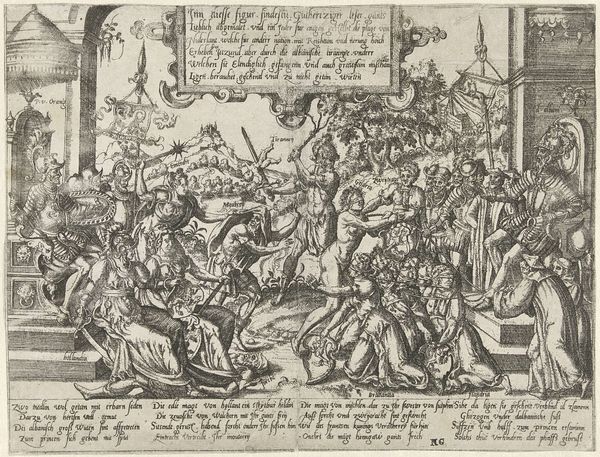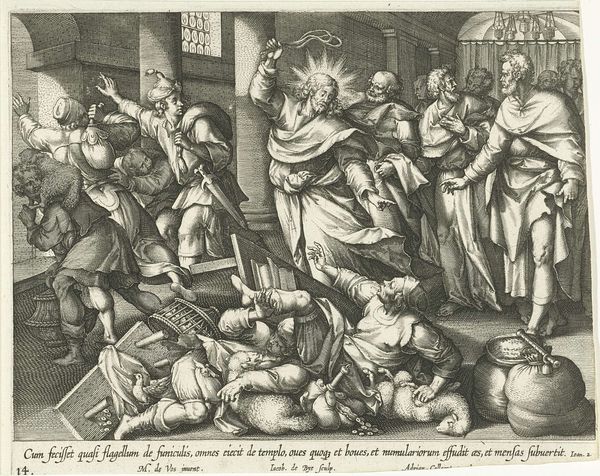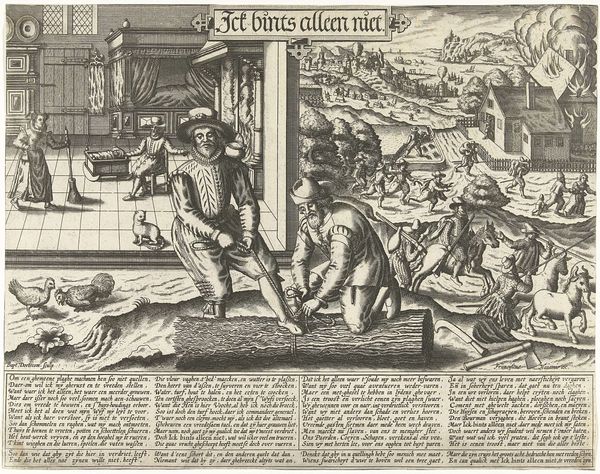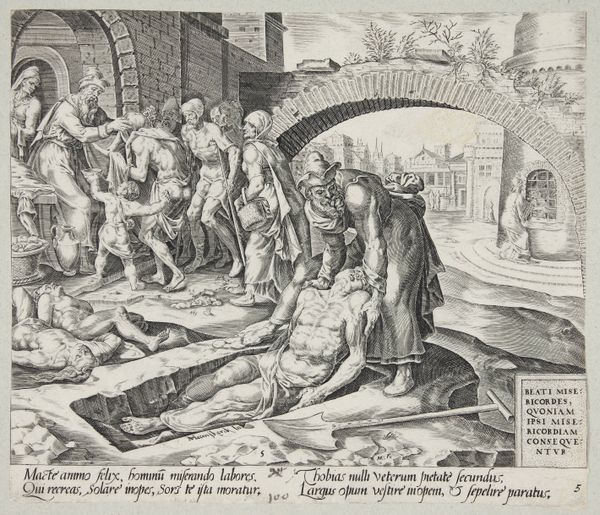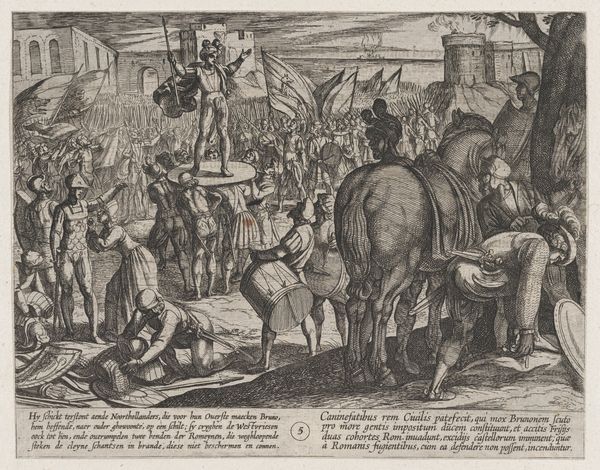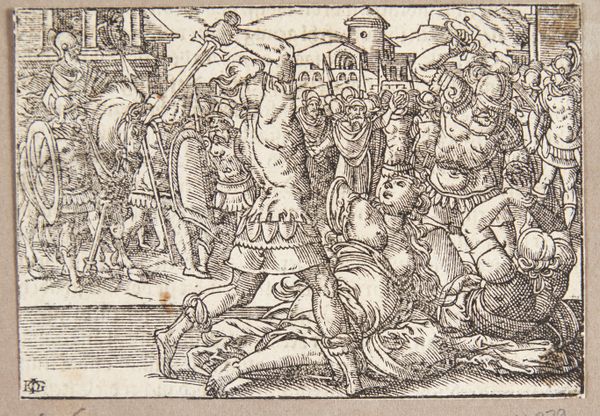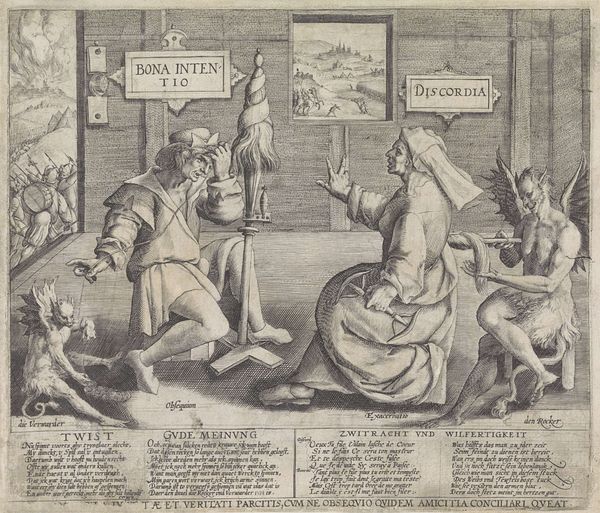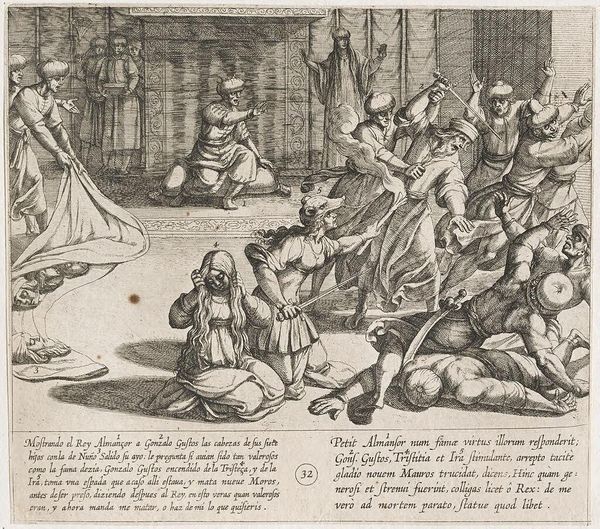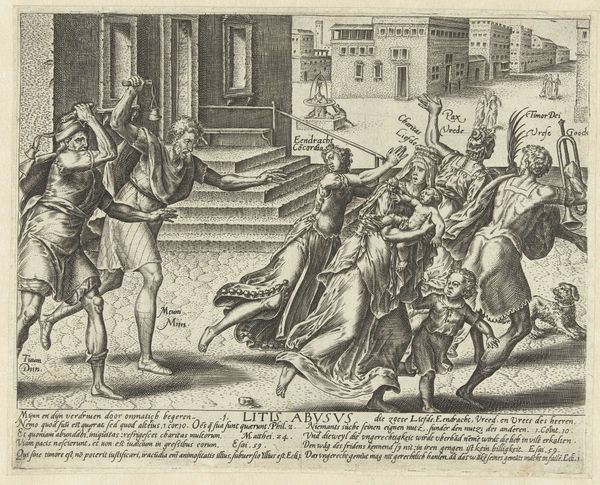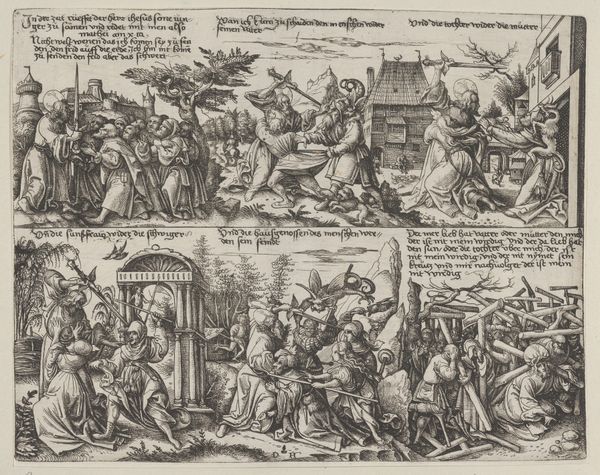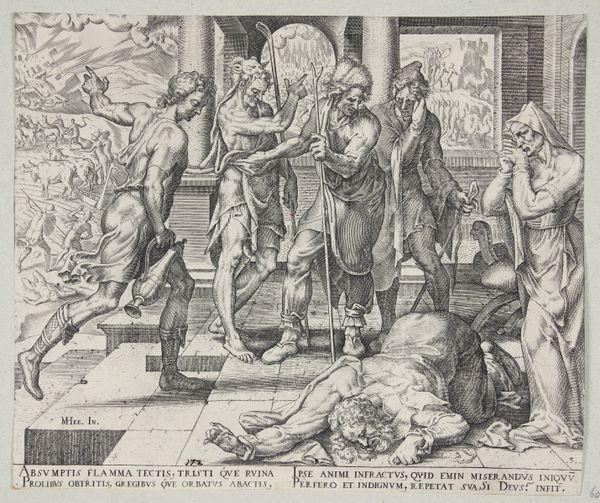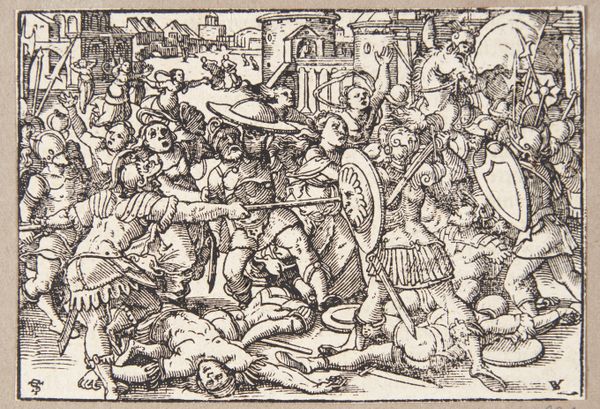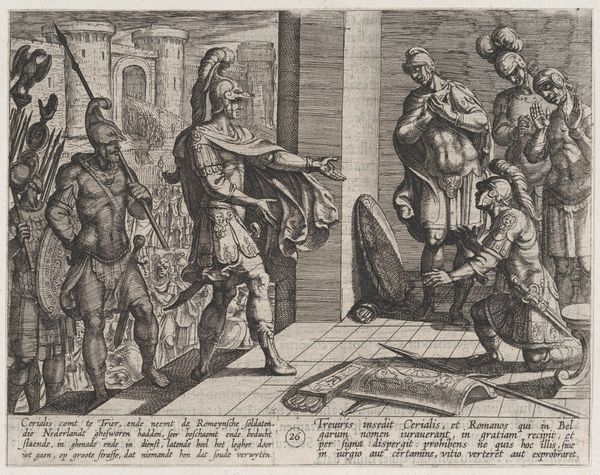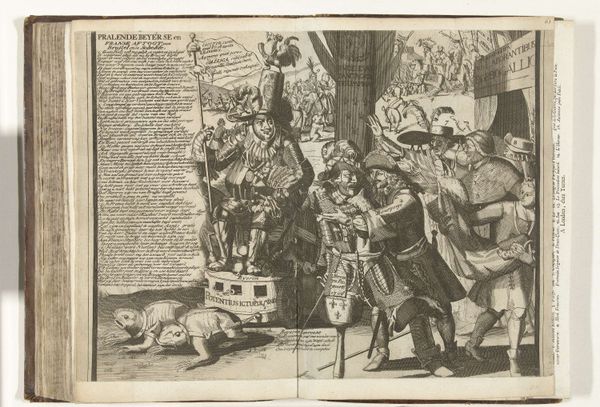
print, engraving
#
narrative-art
# print
#
figuration
#
11_renaissance
#
line
#
history-painting
#
northern-renaissance
#
engraving
Dimensions: height 225 mm, width 286 mm
Copyright: Rijks Museum: Open Domain
Curator: This etching from 1578 is an allegorical representation, bearing the lengthy title "De dood van Don Juan en de vernedering van Alva." It is attributed to an anonymous artist from the Northern Renaissance. The print captures quite a historical moment, wouldn't you agree? Editor: It’s… chaotic, visually and emotionally. The figures are packed together, limbs and faces all vying for attention. There’s a theatrical grimness hanging over it, the stark monochrome amplifying a sense of distress, like a scene pulled directly from a nightmare. What strikes you as the key aspect? Curator: For me, it's the layering of symbolic meaning. On one level, it speaks to the political tensions of the time. But on a deeper level, the image uses the events as fodder to remind the public of broader social issues: the dangers of ambition, for example, and consequences of greed and hubris. Note how detailed each character is, from their garments to expressions. That labor! Editor: Absolutely, that detail! Engraving, of course, requires a meticulous hand. I'm thinking about the conditions under which prints like this were made. Working people, not just wealthy patrons, would be exposed to these allegorical, heavily symbolic, narrative scenes. Were these sorts of polemics often successful as instruments of propaganda? Curator: They were tools of political commentary and popular morality. Printmakers acted as disseminators of ideas in the vernacular. You get all these texts included right in the artwork, functioning as explicit, didactive content, no longer the job of priests. The inclusion of biblical texts and allusions situates specific events within a grand narrative of morality and divine justice. Editor: It's all about power, isn’t it? Who has it, how it’s wielded, and what happens when it’s lost. Considering this work's creation in the late 16th century, it makes me ponder the socio-economic dynamics between artistic production and societal control. These themes must resonate even today. Curator: Precisely. What strikes me most powerfully is the tension between our desire for greatness and the knowledge of our mortality. Editor: An unsettling reminder of our collective fate indeed. All in this dense, darkly detailed print. Thanks, that was revealing.
Comments
No comments
Be the first to comment and join the conversation on the ultimate creative platform.
